Washing machines are pretty straightforward, right? You just load them with dirty laundry, add some detergent and let it spin. But wait. What are all those different cycle options? Do they really matter? What temperature should you choose? Does the kind of detergent you use make a difference?
With all the settings they have, washing machines can actually send you into a spin instead. So, with so many things to consider, do you know how to use a washing machine? Read on and find out how to make sure you’re using your washing machine the right way.
1. Understand the different parts of the washing machine
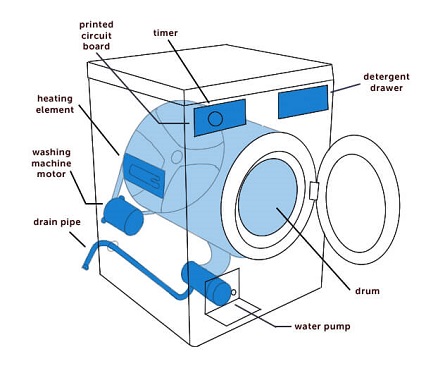
The best way to understand your washing machine is to break it down. Don’t worry, we’re not asking you to start any dismantling. We’re going to look at the different parts of your washing machine to help you understand how they all work together.
- Water pump — this circulates the water through the machine during the wash cycle and drains the water during the spin cycle.
- Drum — you already know there’s one drum in your machine, where the clothes go in. But did you know there’s another one you can’t see? An outer drum contains the inner one, stopping any water leaking into the rest of your machine.
- Washing machine motor — this turns the drum and gets your machine, and the clothes inside, moving around.
- Drain pipe — all the dirty water at the end of the wash leaves your machine through this.
- Printed circuit board — the brains of the operation, the electronics are normally found at the top, on the front of the machine.
- Timer — this sets the wash time for your clothes, manually or automatically.
- Heating element — you’ll find this at the bottom of the machine, where it heats the water to the desired temperature.
- Detergent drawer — this is of course where the detergent goes, along with any fabric conditioner.
2. Sorting your washing

Try to wash your lights and darks separately, as darker dyes can ruin lighter fabrics. Then sort them by fabric type. Never wash your delicates (like washable silk), cottons or denims together as they all need different water temperatures.
Assigning clothes to separate piles based on their level of dirtiness is a good strategy to follow if you want the best results. Heavily soiled items usually need to be pre-treated and need more agitation from the machine to be properly cleaned.
Before you load the drum:
- Empty any pockets — you don’t want to realise you’ve left your passport or car key fob in there halfway through a hot wash.
- Prep the clothes — zip up any zippers, unroll cuffs and turn pockets inside out. To reduce fading, turn dark clothing, like jeans, inside out. Lastly, unbutton all buttons. The agitation of the wash cycle can sometime cause buttons to tear buttonholes.
- Watch out for small items — if it’s something that could get tangled or caught in the machine, like a shoelace or wired undergarment, pop it in a mesh bag.
- Don’t overload — clothes and fabrics packed too tightly end up wrinkled and only partially clean. Water and detergent need to circulate freely to wash. Even a large load of laundry shouldn’t fill the washer tub more than three-quarters full. For synthetics and delicates, try to only fill the drum half full.
3. Detergent, conditioner and other laundry products
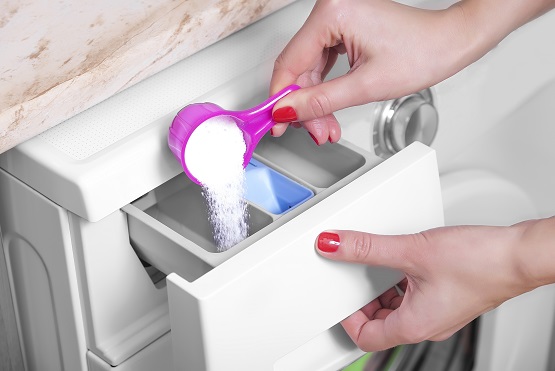
Even if you load the drum correctly, it’ll all be for nothing if you add too little or too much detergent. Make sure you add the right amount of detergent to your wash by looking at the detergent dosing instructions. If you’re running on a half load, use less detergent. Also consider the hardness of your water and just how dirty the clothes are.
There are so many different types of detergent you can buy today. So where do you start?
Well, the first thing you might want to decide on, is whether to go with biological (bio) or non-bio detergent. Bio laundry detergents contain enzymes. These target stains on your clothes and contain a bleaching agent for more stubborn dirt. You can also use bio detergents at lower temperatures. This will reduce the risk of clothes shrinking and help to keep your energy bills down.
Non-bio detergent doesn’t contain enzymes. So, they’re gentler on sensitive skin. They aren’t as effective at removing stains but if you have babies, small children, or adults with sensitive skin in the house, they’re the better choice.
Let’s look closer at the different detergents you can buy:
- Washing powder — this is generally the cheapest option. Powder normally comes with a small measuring scoop that goes directly into the detergent drawer. There’s a higher chance of clogging in the drawer, so make sure you clean it regularly.
- Liquids and gels — liquids and gels don’t contain bleach so may struggle with heavily soiled clothes. Nonetheless, they’re great for keeping colours bright and for everyday washing. These can go into the detergent drawer or washing machine drum, minimising mess.
- Capsules — liquid capsules are incredibly simple — you just pop one straight into the drum. There’s no mess or fuss and they dissolve in the wash to form soap suds.
- Sheets — the latest in innovation is laundry sheets. These dissolve in the washing machine like capsules. They can be used at low temperatures and are extremely eco-friendly.
Fabric conditioner (also known as fabric softener), lubricates and untangles clothes fibres to reduce friction. It keeps them soft, makes them smell nice and fresh and generally makes your clothes last longer too.
When washing your laundry, front loading washing machines should have a specific compartment in the dispenser drawer. This will normally be a flower symbol for fabric conditioner (if you can’t see this then check the user manual). For top loading machines it may vary. If the machine is equipped with a softener compartment, then pour in a cap of fabric conditioner before the wash cycle. If there’s no softener compartment, pour a cap directly into the machine during the last rinse cycle.
You should add the fabric conditioner at the same time as the detergent, although make sure you don’t let them mix. Your machine will use the fabric softener in the rinse cycle only, not the wash cycle.
4. Choose the wash cycle
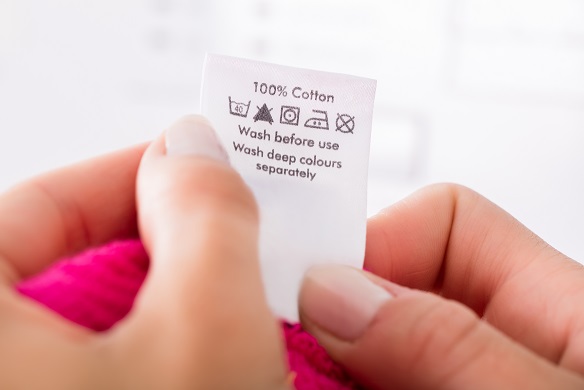
When it comes to the different numbers and symbols on your washing machines, it’s no wonder so many of us just throw everything in, select a quick wash and hope for the best. But the different wash cycles are there for a reason. Putting your clothes on the wrong wash can cause them to fade quicker.
Always check the fabric care label on your clothes. You’ll find the recommended wash cycle there. Once you know that, you can choose the right cycle.
The most common washing cycle options are:
- Cotton — this cycle’s good for things like bed sheets and towels. It usually comes with a high-speed agitation setting so it can be a bit harsher on anything delicate. For those you’ll need…
- Delicates — this is perfect for wool, lingerie or blouses that can be washed in your machine. It’s a low agitation wash with a lower speed spin, so it’ll go nice and easy on your silk and lace.
- Synthetic — this is a medium agitation wash with a low-speed spin that’s best for things like your favourite acrylic blend jumper or your polyester sportswear.
- Quick wash — if you need to get your washing done in under half an hour this is the one for you. Don’t expect it to work on anything too dirty or muddy though. This cycle has a shortened wash cycle and a high-speed spin cycle, to speed up the drying time as well.
- Hand wash — your washing machine might have this cycle, which can be used for clothes that have ‘hand wash only’ listed on the fabric care label. It’s suitable for very delicate garments like silk, soft cottons, delicate linens, thin wools like angora or garments with sequins or beads. The low speeds of agitation and low speed spins help prevent stretching and tearing.
- Spin and rinse — this setting misses out the washing stage so there’s no need to add detergent. It rinses laundry with water before spin drying it.
How to pick the right temperature
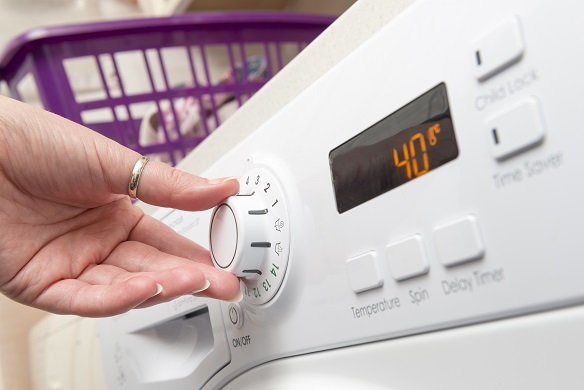
The temperature you wash your clothes at matters a lot. With a good detergent, there’s not much that a 30°C cycle can’t handle. As one of the lower temperatures on your washing machine, people tend to choose this if they’re trying to save energy. But it’s a bit of an all-rounder anyway. It’s hot enough to wash clothes, but not hot enough to shrink or fade them. It’s good for softer fabrics, whereas you’ll need to crank it up a few degrees to 40°C or 50°C if you want to wash everyday fabrics that are harder to wash, like cotton or wool.
You’ll really see improvements in stain removal at 60°C but check that your clothes and fabrics can handle it first. This is the perfect temperature for wiping out nasty bacteria or viruses that might be lurking in your bedding or towels.
Then we have the master of all temperatures, just ten degrees off boiling at 90°C. As the hottest setting on the machine, it’s not suitable for regularly washing your clothes in. You should only use this setting for whites, removing stubborn stains on cotton or linen, killing bacteria on heavily soiled items or for carrying out a ‘maintenance wash’ on your machine.
But very hot water can shrink and damage clothes or cause the colours to fade. Always remember to read the labels on your clothing before choosing 90°C.
What about the spin speed?
Spin speed is measured in ‘rpm’, or ‘revolutions per minute’. In other words — the number of times the drum rotates in 60 seconds.
You can tweak the spin cycle depending on the fabric care instructions. Most machines are set to 1200 - 1400 rpm but sometimes, the spin cycle will be dictated by the wash cycle too.
Occasionally you might want to adjust the spin speed.
- Cotton items can handle a setting of around 1200 - 1400 rpm. This will ensure more water is removed during the cycle, so the items will dry quicker.
- Synthetics sit somewhere in the middle, needing a setting of around 1000 rpm.
- Wool requires a lower setting of around 800 rpm.
- Delicates like silk use the lowest possible setting of 400 rpm.
Cleaning and maintenance of your washing machine
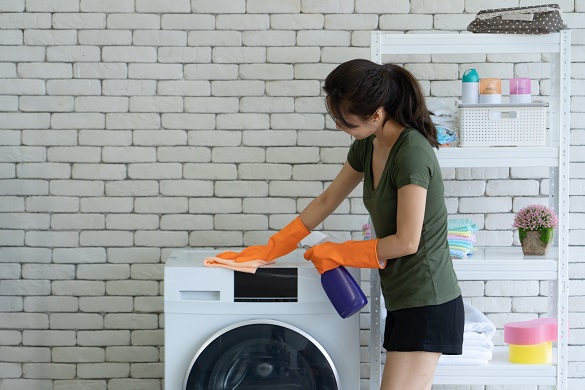
A maintenance wash now and then is the best thing you can do to keep your machine in good shape. It’s basically a deep-clean for your machine where you add in a cleaning solution.
A maintenance wash gets rid of any bacteria, stains, sludge and mould that might have built up inside the washing machine. It also clears out any old water that might be left in the drum.
You should try to give your washing machine a maintenance wash about once a month. Especially if you’re starting to get little black spots building up inside your door seal or if you can see sludge when you gently pull the door seal back.
We’ll show you how to keep your washing machine spinning with handy tips including how to run a maintenance wash and how to clean your detergent drawer properly.
If you have a problem that can't be fixed by a maintenance wash, you should consider a professional washing machine repair.
Have questions?
Our blog is loaded with more related articles
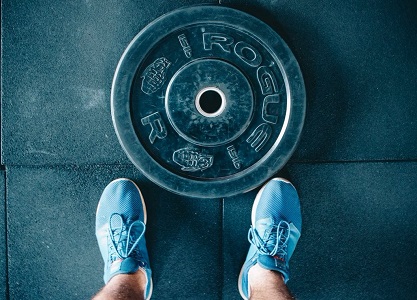
Washing machine tips
How to wash your workout wear and gym clothes
After hours of running, HIIT or sports, the sweat wicking technology of most modern sportswear means it needs to be looked afte...
Read more

Tumble dryer tips
How to use a tumble dryer correctly
Tumble dryers are great if you want your clothes ready to wear in a jiffy. They make life simpler, saving us from hanging cloth...
Read more

Oven tips
How to use an oven: a step-by-step guide
Getting your oven settings right is crucial for cooking food safely and taking care of your appliance. Get some tips from our g...
Read more
